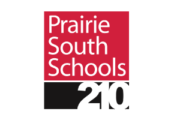Prairie South School Division Streamlines SharePoint Management and Keeps SQL Storage Less Than 200 GB with DocAve®
Success Highlights


Location Saskatchewan, Canada
Industry Education
Platform SharePoint 2010
Critical Needs
- The ability to track and record all interactions in SharePoint
- Swift movement of SharePoint content, including copying sites between test and production environments
- Application of permissions in bulk
- SAN storage of files larger than 1 MB
The Challenge
With schools dispersed throughout a section of the large province of Saskatchewan, many of Prairie South’s employees are spread across remote, rural areas. In order to bring staff together and create a central platform where daily tasks could be performed, Prairie South implemented Microsoft SharePoint 2010 in order to harness the platform for collaboration amongst end users, as well as create a home for the division’s corporate intranet.
Prairie South’s SharePoint deployment consists of a production farm and a test farm, each with its own virtualized web front end server and SQL server. From the outset, Prairie South’s SharePoint environment had approximately 1,100 end users with “read” access, while approximately 10 users possessed “contribute” access to the environment, but plans are in place to add more in the near future.
As with any budding SharePoint deployment, Prairie South’s administrators planned vigilantly from the very first stages of platform adoption. Database Administrator Chad Burkholder and Programmer Analyst Blair Patterson made certain to be well-informed on all aspects of SharePoint, from its strengths to its weaknesses, since both administrators were new to the platform. SharePoint was just one of many different tasks required of the administrators, and each had only a limited amount of time in the workday to dedicate to platform management. The administrators quickly learned that there were aspects of SharePoint’s native abilities that could be challenging and time-consuming, specifically in the areas of end user adoption, maintenance, governance, and scalability. Simple tasks such as managing permissions for sites or transferring sites between test and production environments were often challenging and laborious with native abilities, requiring multiple hours to complete.
Since saving time was of critical importance for the administrators, and hiring a full-time SharePoint administrator was not an option for the division, Burkholder and Patterson set out to find a third-party software solution to meet their specific needs.

Database Administrator, Prairie South School Division
The AvePoint Solution
Burkholder and Patterson examined a number of different solutions, but ultimately decided to implement AvePoint’s DocAve Software Platform. DocAve integrates more than 30 independently deployable modules which function within a unified, browser-based interface and fully distributed architecture, but can also be purchased and deployed independently. Since DocAve offers a wide array of tools for SharePoint management, Prairie South administrators believed the platform could help with all of the major issues they encountered within the division’s deployment. “After having a positive experience with AvePoint’s sales team and selecting DocAve, we found the installation of the software to be very straightforward,” Burkholder said. “The documentation provided was clean, concise, and easy to follow.”
Once DocAve was successfully installed, the administrators began to put the platform’s modules to work in managing the division’s SharePoint deployment. One of the first tools implemented was DocAve Auditor, which empowered administrators to track and record all SharePoint interactions, including usage activity, searches, and security changes. Burkholder and Patterson found Auditor to be an extremely helpful tool as they developed plans for the deployment and encountered any issues that could cause difficulty for end users, thereby potentially inhibiting platform adoption. “Since DocAve allows us to know how our users are accessing data, we are able to plan and adjust our deployment so that solutions and architecture are as intuitive as possible,” Patterson said. “If we notice that users are having difficulty finding items, we can make changes to make it easier for them. For instance, if a dozen mouse clicks are required to access a timesheet, we know something is wrong and can act accordingly.”
DocAve Content Manager was Prairie South’s answer for SharePoint maintenance. Content Manager allowed the administrators to seamlessly copy, move, and reorganize SharePoint content from within the farm. This was especially useful when moving newly created sites from the test environment to production. Since SharePoint does not offer this function natively, sites would need to be built in the test environment and manually recreated in production. For a complex site, this process could take several hours. “With Content Manager, copying sites from test to production takes mere minutes,” Burkholder said. “All data is moved into production easily, and the potential for human error is diminished since sites do not need to be created and then recreated manually.” Additionally, DocAve allowed administrators to move content and securities between sites according to business needs after the division’s annual audits, which frequently resulted in job roles and titles changing throughout the division.
A major concern for both administrators was SharePoint governance. “We investigated using native abilities for governance, but setting securities and permissions manually for each user was simply too time consuming,” Patterson said. DocAve Administrator gave the administrators universal control over the division’s environment to implement effective governance policies through security and settings management. Configurations and security permissions could be propagated to web applications, sites, folders, and lists in bulk, resulting in quicker time-to-value of each update, as well as minimizing human error. “With DocAve, everything in our deployment is at our fingertips,” Burkholder said. “After a thorough governance plan is devised, DocAve enables us to implement that policy as quickly as possible, typically taking mere seconds to set and update permissions, as opposed to the hours native abilities would often require.”
DocAve Storage Manager enabled the administrators to properly scale the division’s deployment for future growth. In order to keep the division’s content database below an optimal 200 GB level, the administrators set a rule for DocAve to store binary large objects (BLOBs) larger than 1 MB on the division’s storage area network (SAN), rather than the more-expensive SQL server. “Based on our current rate of growth, we estimate our SharePoint data will ultimately reach the terabyte level,” Burkholder said. “While DocAve is compressing and offloading BLOBs to avoid storage burdens and scale our environment for the future, end users are able to access all of their data through SharePoint without issue no matter where it resides. Installing and configuring Storage Manager was simple and took minutes, whereas configuring SharePoint’s native Remote Blob Storage (RBS) function would have been more complicated and time consuming.”
From trial period, to implementation, to eventual use of DocAve, the administrators relied upon AvePoint’s live, global technical support team whenever needed. If an issue was encountered, support was able to provide a patch within 24 hours. “Our experience with AvePoint support has been perfect,” Patterson said. “We have been consistently impressed by the fact that they take the time to check in with us after our initial call to ensure our problems are resolved.”

The Road Ahead
Since SharePoint was only a part-time task for Burkholder and Patterson, DocAve was necessary timesaver for maintaining Prairie South’s deployment, but it also offered significant benefits for improving end user experience and effectively scaling the environment.
In the near future, Prairie South’s SharePoint environment will grow exponentially when students are given access to the platform, bringing the total end user count to approximately 8,000. DocAve’s role in the deployment will remain crucial. “As more users adopt SharePoint and our environment grows, DocAve will continue to help us scale properly, provide the best possible experience for end users, and save valuable time when managing the platform,” Burkholder said.